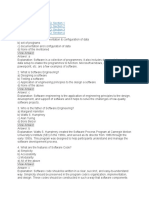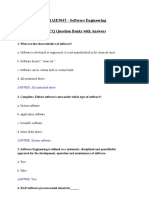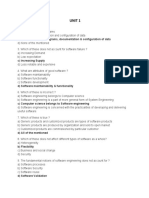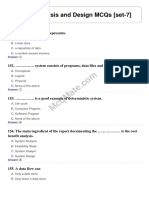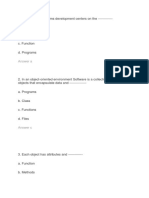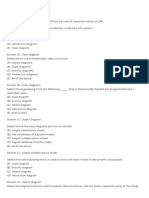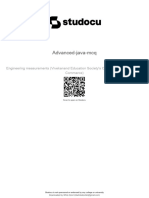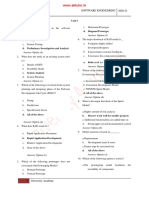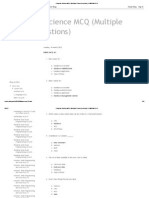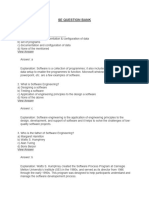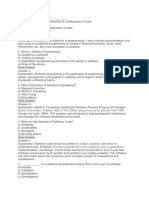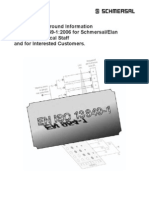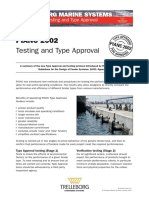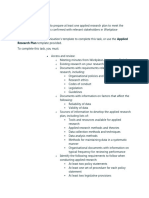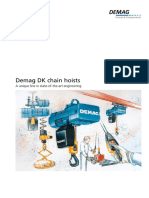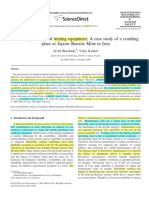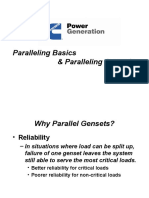100% found this document useful (1 vote)
3K views26 pagesSoftware Engineering MCQ (Multiple Choice Questions)
The document provides an overview of 1000 multiple choice questions on software engineering organized into 4 sections. It includes sample questions related to topics like software definition, software engineering principles, software development lifecycles, software quality attributes, and agile methodologies. The questions cover concepts like the software engineering process, requirements analysis, design methodologies, testing, and project management.
Uploaded by
Nazir AbdulkareemCopyright
© © All Rights Reserved
We take content rights seriously. If you suspect this is your content, claim it here.
Available Formats
Download as PDF, TXT or read online on Scribd
100% found this document useful (1 vote)
3K views26 pagesSoftware Engineering MCQ (Multiple Choice Questions)
The document provides an overview of 1000 multiple choice questions on software engineering organized into 4 sections. It includes sample questions related to topics like software definition, software engineering principles, software development lifecycles, software quality attributes, and agile methodologies. The questions cover concepts like the software engineering process, requirements analysis, design methodologies, testing, and project management.
Uploaded by
Nazir AbdulkareemCopyright
© © All Rights Reserved
We take content rights seriously. If you suspect this is your content, claim it here.
Available Formats
Download as PDF, TXT or read online on Scribd
/ 26
